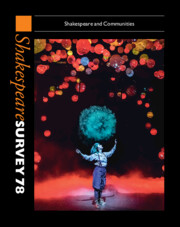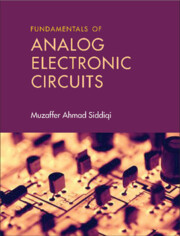Refine search
Actions for selected content:
3392887 results
Effect of Extracts of allium cepa peel–based diet on high-fat diet induced obese female rats
-
- Journal:
- Proceedings of the Nutrition Society / Volume 84 / Issue OCE4 / August 2025
- Published online by Cambridge University Press:
- 09 October 2025, E267
-
- Article
-
- You have access
- Export citation
11 - Challenges of Generative AI on Human–AI Interaction and Collaboration
-
-
- Book:
- Human-AI Interaction and Collaboration
- Published online:
- 19 September 2025
- Print publication:
- 09 October 2025, pp 268-283
-
- Chapter
- Export citation
Epilogue
-
- Book:
- The Yoruba Are on a Rock
- Published online:
- 18 September 2025
- Print publication:
- 09 October 2025, pp 336-344
-
- Chapter
- Export citation
11 - Liability and Responsibility
-
- Book:
- International Environmental Law
- Published online:
- 19 September 2025
- Print publication:
- 09 October 2025, pp 381-414
-
- Chapter
- Export citation
Glossary
-
- Book:
- The Psychology of System Change and Resistance to Change
- Published online:
- 23 September 2025
- Print publication:
- 09 October 2025, pp 262-267
-
- Chapter
- Export citation
A Common Two-Dimensional Structure? Comparing Demand-side Political Spaces of Eight European Democracies
-
- Journal:
- Government and Opposition , First View
- Published online by Cambridge University Press:
- 09 October 2025, pp. 1-27
-
- Article
-
- You have access
- Open access
- HTML
- Export citation
6 - Merchants and the Urban Political Elite
- from Part II - The Merchants’ Selbstzeugnisse
-
- Book:
- Making Merchants
- Published online:
- 19 September 2025
- Print publication:
- 09 October 2025, pp 70-86
-
- Chapter
- Export citation
7 - Economic Theory’s Sweet Spot: Lean Systems
- from II - Four Strategies of Supply Chain Management
-
- Book:
- Re-Imagining Supply Chain Management
- Published online:
- 22 September 2025
- Print publication:
- 09 October 2025, pp 142-162
-
- Chapter
- Export citation
Contents
-
- Book:
- The Cambridge Handbook of One Health and the Law
- Published online:
- 25 September 2025
- Print publication:
- 09 October 2025, pp v-vi
-
- Chapter
- Export citation
Epigraph
-
- Book:
- The Epistemology of the Secret
- Published online:
- 23 July 2025
- Print publication:
- 09 October 2025, pp v-vi
-
- Chapter
- Export citation
Valorisation of Agri-Food By-Products as Dietary Interventions to Support Gut Microbiota and Health in Weaned Pigs
-
- Journal:
- Proceedings of the Nutrition Society / Volume 84 / Issue OCE4 / August 2025
- Published online by Cambridge University Press:
- 09 October 2025, E265
-
- Article
-
- You have access
- Export citation
16 - Achieving One Health Policy Objectives through a Legally Supported, Value-Based Health and Care Approach
- from Part III - One Health and Future Legal Structures
-
-
- Book:
- The Cambridge Handbook of One Health and the Law
- Published online:
- 25 September 2025
- Print publication:
- 09 October 2025, pp 244-258
-
- Chapter
- Export citation
Part II - One Health and Contemporary Legal Structures
-
- Book:
- The Cambridge Handbook of One Health and the Law
- Published online:
- 25 September 2025
- Print publication:
- 09 October 2025, pp 87-180
-
- Chapter
- Export citation
5 - The Sex Wars Come to AIDS
-
- Book:
- Risk and Resistance
- Published online:
- 10 September 2025
- Print publication:
- 09 October 2025, pp 109-144
-
- Chapter
- Export citation
Chapter 14 - Leiomyomas
-
- Book:
- Nezhat's Textbook of Minimally Invasive Surgery
- Published online:
- 06 November 2025
- Print publication:
- 09 October 2025, pp 369-427
-
- Chapter
- Export citation
4 - Rhythms of Work
-
- Book:
- The Experience of Work in Early Modern England
- Published online:
- 19 September 2025
- Print publication:
- 09 October 2025, pp 132-174
-
- Chapter
-
- You have access
- Open access
- HTML
- Export citation
3 - The Comparative Ethnography
- from Part I - Intracultural Ethnography
-
- Book:
- Ethnography in International Business
- Published online:
- 21 October 2025
- Print publication:
- 09 October 2025, pp 87-110
-
- Chapter
- Export citation

Shakespeare Survey 78
- Shakespeare and Communities
-
- Published online:
- 08 October 2025
- Print publication:
- 16 October 2025

Lost in Automatic Translation
- Navigating Life in English in the Age of Language Technologies
-
- Published online:
- 08 October 2025
- Print publication:
- 21 August 2025

Fundamentals of Analog Electronic Circuits
-
- Published online:
- 08 October 2025
- Print publication:
- 30 November 2025
-
- Textbook
- Export citation
